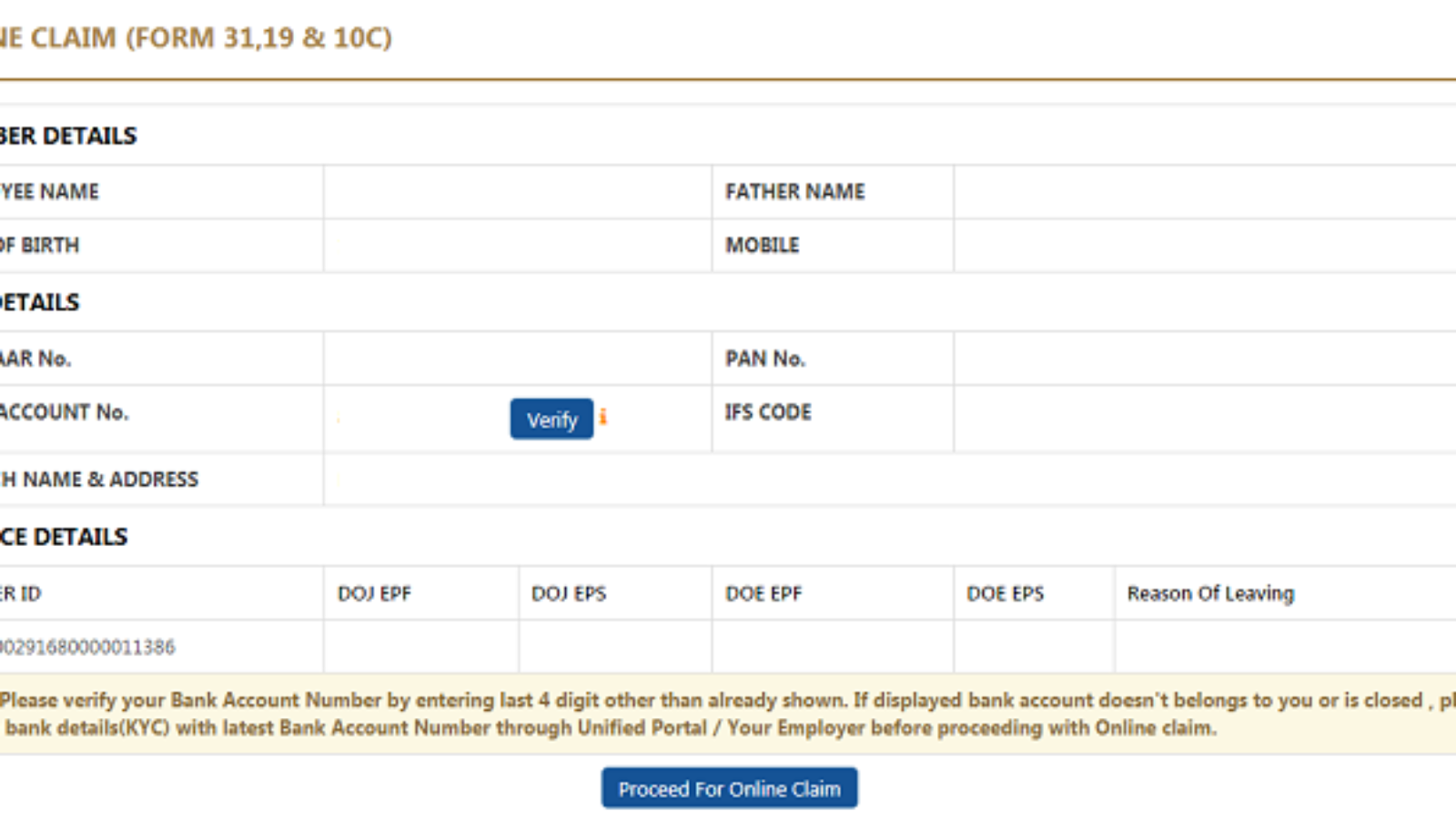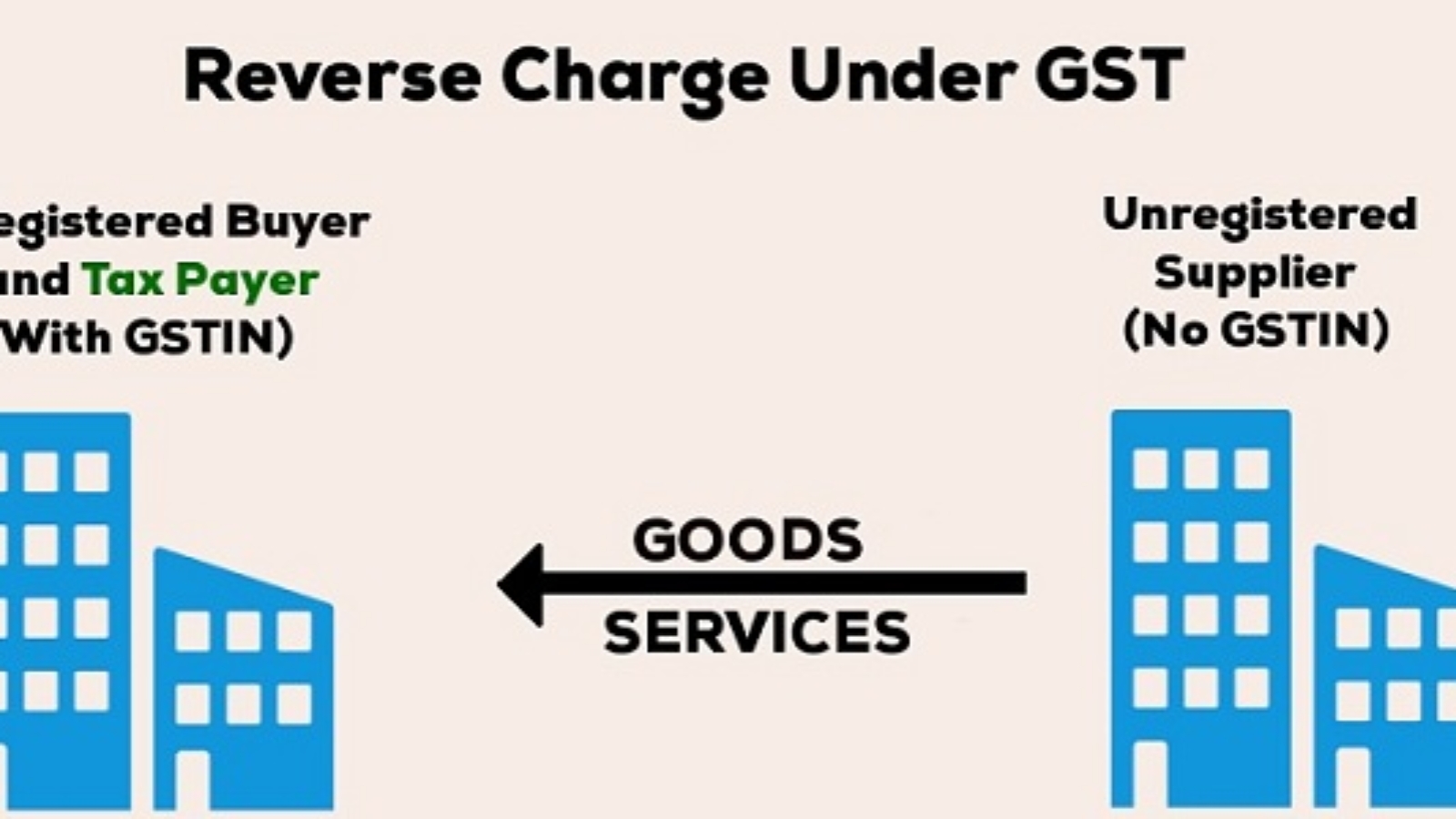CAPITAL GAIN
Income under the Capital Gains
4.1 Chargeability:
Capital gains shall be chargeable to tax if the following conditions are satisfied:
- There should be a capital asset. In other words, the asset transferred should be a capital asset on the date of transfer;
- It should be transferred by the taxpayer during the previous year;
- There should be profits or gain as a result of the transfer.
4.2 Meaning of Capital Asset [Sec 2(14)]
Capital Asset is defined to include:
- Any kind of property held by an assessee, whether or not connected with business or profession of the assessee.
- Any securities held by an FII which has invested in such securities in accordance with the regulations made under the SEBI Act, 1992.
However, the term ‘capital asset’ shall exclude the following:
- Stock-in-trade, consumable stores, raw materials held for the purpose of business or profession;
- Movable property held for the personal use of the taxpayer or for any member of his family dependent upon him. However, jewelry, costly stones, and ornaments made of silver, gold, platinum or any other precious metal, archaeological collections, drawings, paintings, sculptures or any work of art shall be considered as a capital asset even if used for personal purposes;
- Specified Gold Bonds and Special Bearer Bonds;
- Agricultural Land in India, not being a land situated:
- Within the jurisdiction of the municipality, notified area committee, town area committee, cantonment board and which has a population not less than 10,000;
- Within the range of following distance measured aerially from the local limits of any municipality or cantonment board:
- not being more than 2 KMs, if the population of such area is more than 10,000 but not exceeding 1 lakh;
- not being more than 6 KMs, if the population of such area is more than 1 lakh but not exceeding 10 lakhs;or
- not being more than 8 KMs, if the population of such area is more than 10 lakhs.
- Deposit certificates issued under the Gold Monetisation Scheme, 2015
4.3 Type of Capital Assets
- Short Term Capital Asset
Capital assets held for not more than 36 months immediately prior to the date of transfer shall be deemed as a short-term capital asset. However, the following assets held for not more than 12 months shall be treated as short-term capital assets:
- Equity or preference shares in a company which are listed in any recognized stock exchange in India;
- Other listed securities;
- Units of UTI;
- Units of equity-oriented funds; or
- Zero-Coupon Bonds.
Note: Unlisted shares and immovable property (being land or building or both) held for not more than 24 months immediately prior to the date of transfer shall be treated as a short-term capital assets.
- Long Term Capital Asset
Capital Asset that held for more than 36 months or 24 months or 12 months, as the case may be, immediately preceding the date of transfer is treated as a long-term capital asset.
4.4 Period of Holding
The period of holding shall be determined as follows:
| Different situations |
How to calculate the period of holding |
| Shares held in a company in liquidation |
The period subsequent to the date on which the company goes into liquidation shall be excluded. |
| Capital asset which becomes the property of the assessee in the circumstances mentioned in section 49(1) read with section 47 [i.e., when an asset is acquired by gift, will, succession, inheritance or the asset is required at the time of partition of family or under a revocable or irrevocable trust or under amalgamation, etc.] |
The period for which the asset was held by the previous owner should be included (cost of acquisition, in this case, shall be computed in the manner provided in Para 4.10) |
| Allotment of shares in an amalgamated Indian company in lieu of shares held in amalgamating company |
The period of holding shall be computed from the date of acquisition of shares in the amalgamating company. |
| Right shares |
The period of holding shall be computed from the date of allotment of the right shares. |
| Right entitlement |
The period of holding will be considered from the date of the offer to subscribe to shares to the date when such right entitlement is renounced by the person. |
| Bonus shares |
The period of holding shall be computed from the date of allotment of bonus shares. |
| Issue of shares by the resulting company in a scheme of demerger to the shareholders of the demerged company |
The period of holding shall be computed from the date of acquisition of shares in the demerged company. |
| Membership right held by a member of the recognised stock exchange |
In case of shares as well as trading/clearing rights, the period for which the person was a member of the stock exchange immediately prior to such demutualization/corporatization shall be included. |
| Flat in a co-operative society |
The period of holding shall be computed from the date of allotment of shares in the society. |
| Sweat equity shares allotted by the employer |
The period of holding shall be reckoned from the date of allotment or transfer of such equity shares (applicable from the assessment year 2008-09) |
| Unit of a business trust [allotted pursuant to the transfer of shares as referred to in section 47(xvii)] |
The period of holding shall include the period for which shares were held by the assessee. |
| Conversion of preference shares into equity shares |
The period of holding of equity shares shall include the period for which preference shares were held by the assessee |
| Units allotted to an assessee pursuant to the consolidation of two or more scheme of a mutual fund as referred to in Section 47(xviii) |
The period of holding of such units shall include the period for which the unit or units in the consolidating scheme of the mutual fund were held by the assessee. |
| Shares in a company acquired by the non-resident assessee on the redemption of Global Depository Receipts referred to in Section 115AC(1)(b) |
The period of holding of such shares shall be reckoned from the date on which a request for such redemption was made. |
| Transactions in shares and securities not given above:
1) Date of purchase (through stock exchanges) of shares and Securities
2) Date of transfer (through stock exchanges) of shares and securities
3) Date of purchase/transfer of shares and securities (transaction has taken place directly between parties and not through stock exchanges)
4) Date of purchase/sale of shares and securities purchased in several lots at different points of time but delivery taken subsequently and sold in parts
5) Transfer of a security by a depository (i.e., Demat account) |
a) Date of purchase by a broker on behalf of the investor.
b) Date of broker’s note provided such transactions are followed up by delivery of shares and also the transfer deeds.
c) Date of the contract of sale as declared by parties provided it is followed up by actual delivery of shares and the transfer deeds.
d) The FIFO method shall be adopted to reckon the period of the holding of the security, in cases where the dates of purchase and sale cannot be correlated through a specific number of scrips.
e) The period of holding shall be determined on the basis of the first-in-first-out method. |
| Conversion of stock-in-trade into capital asset |
The period of holding of such converted asset shall be reckoned from the date of conversion. |
4.5 Meaning of Transfer [Section 2(47)]
“Transfer”, in relation to a capital asset, includes:
(i) Sale, exchange or relinquishment of the asset;
(ii) Extinguishment of any rights in relation to a capital asset;
(iii) Compulsory acquisition of an asset;
(iv) Conversion of capital asset into stock-in-trade;
(v) Maturity or redemption of a zero-coupon bond;
(vi) Allowing possession of immovable properties to the buyer in part performance of the contract;
(vii) Any transaction which has the effect of transferring an (or enabling the enjoyment of) immovable property; or
(viii) Disposing of or parting with an asset or any interest therein or creating any interest in any asset in any manner whatsoever.
4.6 Transactions which are not regarded as transfer [Section 47]
The following transactions shall not be regarded as transfer (subject to certain conditions). Hence, the following transaction shall not be charged to capital gains:
| Section |
Particulars |
| 46(1) |
Distribution of asset in kind by a company to its shareholders at the time of liquidation |
| 47(i) |
Distribution of capital asset on a total or partial partition of HUF |
| 47(iii) |
Transfer of capital asset under a gift or will or an irrevocable trust |
| 47(iv) |
Transfer of capital asset by a company to its wholly-owned subsidiary company |
| 47(v) |
Transfer of a capital asset by a wholly-owned subsidiary company to its holding company |
| 47(vi) |
Transfer of capital assets in a scheme of amalgamation |
| 47(via) |
Transfer of shares in an Indian company held by a foreign company to another foreign company under a scheme of amalgamation of the two foreign companies |
| 47(via) |
Transfer of share of a foreign company (which derives, directly or indirectly, its value substantially from the share or shares of an Indian company) held by a foreign company to another foreign company under a scheme of amalgamation (subject to conditions) |
| 47(via) |
Transfer of capital assets in a scheme of amalgamation of a banking company with a banking institution |
| 47(vib) |
Transfer of capital assets by the demerged company to the resulting company in a demerger |
| 47(VIC) |
Transfer of shares held in an Indian company by a demerged foreign company to the resulting foreign company |
| 47(vica) |
Any transfer of a capital asset by the predecessor co-operative bank to the successor co-operative bank in a business reorganization. |
| 47(vicb) |
Any transfer of capital asset (being shares) held by a shareholder in the predecessor co-operative bank if the transfer is made in consideration of the allotment to him of any shares in the successor co-operative bank in a scheme of business reorganization |
| 47(vicc) |
Transfer of share of a foreign company (which derives, directly or indirectly, its value substantially from the share or shares of an Indian company) held by a demerged foreign company to resulting foreign company in case of demerger (subject to conditions) |
| 47(vid) |
Transfer or issue of shares by the resulting company to the shareholders of the demerged company in a scheme of demerger |
| 47(vii) |
Allotment of shares in amalgamated company in lieu of shares held in amalgamating company |
| 47(viia) |
Transfer of capital assets (being foreign currency convertible bonds or GDR) by a non-resident to another non-resident |
| 47(viiaa) |
Any transfer made outside India, of a capital asset (being rupee denominated bond of an Indian company issued outside India) by a non-resident to another non-resident |
| 47(viiab) |
Any transfer of following capital assets by a non-resident on a recognised stock exchange located in any International Financial Services Centre:
a) Bond or GDR
b) Rupee Denominated Bond of an Indian Co.
c) Derivative
d) Such other Securities as may be prescribed. |
| 47(viib) |
Transfer of capital assets (being a Government security carrying periodic payment of interest) outside India through an intermediary dealing in settlement of securities by a non-resident to another non- resident |
| 47(viic) |
Redemption of capital asset being sovereign gold bond issued by RBI under the Sovereign Gold Bond Scheme, 2015 |
| 47(ix) |
Transfer of a capital asset (being work of art, manuscript, painting, etc.) to Government, University, National museum, etc. |
| 47(x) |
Transfer by way of conversion of bonds or debentures into shares |
| 47(xa) |
Transfer by way of conversion of bonds [as referred to in section 115AC(1)(a)] into shares or debentures of any company |
| 47(xb) |
Any transfer by way of conversion of preference shares into equity shares |
| 47(xi) |
Transfer by way of exchange of a capital asset being membership of a recognized stock exchange for shares of a company |
| 47(xii) |
Transfer of land by a sick industrial company which is managed by its workers’ co-operative |
| 47(xiii) |
Transfer of a capital asset by a firm to a company in the case of conversion of firm into company |
| 47(xiiia) |
Transfer of a capital asset being a membership right held by a member of a recognized stock exchange in India |
| 47(xiiib) |
Transfer of a capital asset by a private company or unlisted public company to an LLP, or any transfer of shares held in the company by a shareholder, in the case of conversion of company into LLP |
| 47(xiv) |
Transfer of a capital asset to a company in the case of conversion of proprietary concern into a company |
| 47(xv) |
Transfer involved in a scheme of lending of securities |
| 47(xvi) |
Transfer of a capital asset in a transaction of reverse mortgage made under a scheme notified by the Government |
| 47(xvii) |
Transfer of a capital asset (being share of a special purpose vehicle) to a business trust in exchange of units allotted by that trust to the transferor |
| 47(xviii) |
Transfer of units of a mutual fund pursuant to consolidation of two or more schemes of equity oriented mutual fund or of two or more schemes of a mutual fund other than equity oriented mutual fund |
| 47(xix) |
Transfer of units of a mutual fund from one plan to another pursuant to consolidation of plans within scheme of mutual funds. |
4.7 Computation of capital Gain:
Computation of capital gain depends upon the nature of the capital asset transferred during the previous year, vis-à-vis, short-term capital asset, long-term capital asset or depreciable asset. Capital gain arising on transfer of short-term capital asset or depreciable asset is considered as short-term capital gain, whereas transfer of long-term capital asset gives rise to long-term capital gain.
The capital gains on transfer of capital asset shall be computed in the following manner:
| Short-term capital assets
[Section 48] |
Long-term capital assets
[Section 48] |
Depreciable asset
[Section 50]* |
| The full value of consideration
Less: Cost of acquisition of an asset
Less: Cost of improvement
Less: Expenditure incurred wholly and exclusively in connection with such transfer |
The full value of consideration
Less: Indexed Cost of acquisition (See Note 1)
Less: Indexed Cost of Improvement (See Note 1)
Less: Expenditure incurred wholly and exclusively in connection with such transfer |
WDV of the block of the asset at the beginning of the previous year
Add: Actual cost of assets falling within that block acquired during the year
Less: Full value of consideration of assets transferred during the year
Less: Expenditure incurred wholly and exclusively in connection with such transfer |
* Short-term capital gain or loss from the sale of depreciable asset will arise only in the following two situations:
- When on last day of the previous year, WDV of the block of asset is nil; or
- When on the last day of the previous year, block ceases to exist.
Note 1: Indexed Cost of Acquisition and Improvement [Second Proviso to Section 48]
- In case of transfer of long-term capital assets, indexed cost of acquisition and indexed cost of improvement shall be deducted from the full value of consideration;
- Indexed cost of acquisition and indexed cost of improvement shall be computed with reference to Cost Inflation Index (ASCII’) in the following manner:
Indexed Cost of Acquisition:-
[(Cost of Acquisition) × (CII for the year of transfer)]
(CII for the year of the acquisition or for the Financial Year 2001-02, whichever is later)
Indexed Cost of Improvement:-
[(Cost of Improvement) × (CII for the year of transfer)]
CII for the year of Improvement
Note: The base year for computation of capital gains has been shifted from 1981 to 2001 with effect from the assessment year 2018-19. Thus, if any capital asset (acquired before April 1, 2001) is transferred then the assessee has an option to take its cost of acquisition either as fair market value as on April 1, 2001, or its actual cost.
However, there are some cases where the benefit of indexation is not available, which are as under:
| Section |
Capital Asset |
Transferor |
| Third Proviso to Section 48 |
Long-term capital gains arising from the transfer of an equity share, or a unit of an equity oriented fund or a unit of a business trust as referred to in Section 112A. |
Any Person |
| The fourth proviso to section 48 |
Bonds or debentures.
Note: However, indexation benefit is available on two types of bonds, namely,-
• Capital indexed bonds (issued by the Government)
• Sovereign Gold Bond (issued by the RBI under the Sovereign Gold Bond Scheme, 2015) |
Any person |
| 112 |
Capital gains arising from the transfer of unlisted shares (which is taxable at a concessional rate of 10%) as calculated without giving effect to the first proviso to Section 48 |
Non-resident |
| 44AE |
Presumptive income from the business of plying, hiring or leasing of goods carriage if the assessee does not own more than 10 goods carriage. |
For Heavy Goods Vehicle:
Rs. 1,000 per ton of gross vehicle weight for every month or part of a month during which the heavy goods vehicle is owned by the assessee.
For Other Goods Vehicle:
Rs. 7,500 for every month or part of a month during which the carriage of the goods is owned by the assessee. |
| 50A |
Depreciable asset (other than an asset used by a power generating unit eligible for depreciation on straight-line basis) |
Any person |
| 50B |
Undertaking/division transferred by way of slump sale as covered by section 50B |
Any person |
| 115AB |
Units purchased in foreign currency as given in section 115AB |
Offshore fund |
| 115AC |
Global depository receipts (GDR) purchased in foreign currency as given in section 115AC |
Non-resident |
| 115ACA |
Global depository receipts (GDR) purchased in foreign currency as given in section 115ACA |
Resident individual – employee |
| 115AD |
Securities as given in section 115AD |
Foreign Institutional Investors |
CII in relation to a previous year means such an index, as Central Government notifies on year to year basis.
The Central Government has notified the following Cost Inflation Indexes
| Financial year |
Cost Inflation Index |
| 2001-02 |
100 |
| 2002-03 |
105 |
| 2003-04 |
109 |
| 2004-05 |
113 |
| 2005-06 |
117 |
| 2006-07 |
122 |
| 2007-08 |
129 |
| 2008-09 |
137 |
| 2009-10 |
148 |
| 2010-11 |
167 |
| 2011-12 |
184 |
| 2012-13 |
200 |
| 2013-14 |
220 |
| 2014-15 |
240 |
| 2015-16 |
254 |
| 2016-17 |
264 |
| 2017-18 |
272 |
| 2018-19 |
280 |
4.8 Computation of capital gain in case of sale of shares or debentures of an Indian company purchased by a non-resident in foreign currency [ first proviso to section 48]
In such a case, capital gain shall be determined as under:-
| Full Value of Consideration (X) |
Find out sale consideration in Indian currency and convert it into some foreign currency, which was used to acquire the capital asset, at average exchange rate* on the date of transfer. |
| Cost of acquisition (Y) |
Find out the cost of acquisition in Indian currency and convert it into foreign currency at the average exchange rate on the date of acquisition. |
| Expenditure on sale (Z) |
Find out the expenditure on transfer in Indian currency and convert it into the same foreign currency at the average exchange rate on the date of transfer (not on the date when expenditure is incurred). |
| Capital gain (X-Y-Z) |
The capital gains as computed in after reducing the cost of acquisition and expenditure from the full value of consideration shall be reconverted into Indian currency at buying rate** on the date of transfer. |
* Average exchange rate means the average of the telegraphic transfer buying rate and telegraphic transfer selling rate of the foreign currency initially utilized in the purchase of the capital asset.
** Buying rate is the telegraphic transfer buying rate of such currency.
4.9 Full Value of Consideration
The full value of consideration is the consideration received or receivable by the transferor in lieu of assets, which he has transferred. Such consideration may be received in cash or in kind. If it is received in kind, then the fair market value (‘FMV’) of such assets shall be taken as the full value of consideration.
However, in the following cases “full value of the consideration” shall be determined on a notional basis as per the relevant provisions of the Income-tax Act, 1961:
| S. No. |
Nature of transaction |
Section |
Full Value of Consideration |
| 1. |
Money or other asset received under any insurance from an insurer due to damage or destruction of a capital asset |
45(1A) |
Value of money or the FMV of the asset (on the date of receipt) |
| 2. |
Conversion of capital asset into stock-in-trade |
45(2) |
FMV of the capital asset on the date of conversion |
| 3. |
Transfer of capital asset by a partner or member to the firm or AOP/BOI, as the case may be, as his capital contribution |
45(3) |
Amount recorded in the books of accounts of the firm or AOP/BOI as the value of the capital asset received as a capital contribution |
| 4. |
Distribution of capital asset by Firm or AOP/BOI to its partners or members, as the case may be, on its dissolution |
45(4) |
FMV of such asset on the date of transfer |
| 5. |
Money or other assets received by shareholders at the time of liquidation of the company |
46(2) |
Total money plus FMV of assets received on the date of distribution less amount assessed as deemed dividend under section 2(22)(c) |
| 6. |
Buy-back of shares and other specified securities by a company |
46A |
The consideration paid by the company on buyback of shares or other securities would be deemed as the full value of consideration. The difference between the cost of acquisition and buy-back price (full value of consideration) would be taxed as capital gain in the hands of the shareholder.
However, in case of buy-back of shares by a domestic company (whether listed* or unlisted), the company shall be liable to pay additional tax at the rate of 20% under section 115QA on the distributed income (i.e., buy-back price as reduced by the amount received by the company for issue of such shares). Consequently, the capital gain arising in the hands of a shareholder shall be exempt by virtue of section 10(34A) in such cases.
*With effect from 05/07/2019, section 115QA has been amended to levy an additional tax on buyback of shares by listed companies as well. Consequently, section 10(34A) has also been amended to exempt income arising in hands of shareholder on account of buyback of shares by listed companies. x |
| 7. |
Shares, debentures, warrants (‘securities’) allotted by an employer to an employee under notified Employees Stock Option Scheme and such securities are gifted by the concerned employee to any person |
Fourth Proviso to Section 48 |
Fair Market value of securities at the time of the gift |
| 7A. |
Conversion of capital asset into stock-in-trade |
49 |
FMV of the inventory as on the date of conversion |
| 8. |
In case of transfer of land or building, if sale consideration declared in the conveyance deed is less than the stamp duty value |
50C |
The value adopted or assessed or assessable by the Stamp Valuation Authority shall be deemed to be the full value of consideration. However, no such adjustment is required to be made if value adopted for stamp duty purposes does not exceed 105% of the sale consideration.
Note: Where the date of the agreement (fixing the amount of consideration) and the date of registration for the transfer of property is not the same, the value adopted or assessed or assessable by Stamp Valuation Authority on the date of agreement may be taken as the full value of consideration. |
| 8A. |
Where the consideration for a transfer of unquoted shares is less than the Fair Market Value |
50CA |
The Fair Market Value (so determined in the prescribed manner) shall be deemed to be the full value of consideration
Note: The Board may prescribe transactions undertaken by a certain class of persons to which the provisions of Section 50CA shall not be applicable. (w.e.f. Assessment Year 2020-21) |
| 9. |
If consideration received or accruing as a result of the transfer of a capital asset is not ascertainable or cannot be determined |
50D |
FMV of an asset on the date of transfer |
4.10 Cost of Acquisition
The cost of acquisition of an asset is the amount for which it was originally acquired by the assessee. It includes expenses of capital nature incurred in connection with such purchase or for completing the title of the property.
However, in cases given below, the cost of acquisition shall be computed on a notional basis:
| S. No. |
Particulars |
Notional Cost of Acquisition |
| 1. |
Additional compensation in the case of compulsory acquisition of capital assets |
Nil |
| 2. |
Assets received by a shareholder on liquidation of the company |
FMV of such asset on the date of distribution of assets to the shareholders |
| 3. |
Stock or shares becomes the property of taxpayer on consolidation, conversion, etc. |
Cost of acquisition of such stock or shares from which such asset is derived |
| 4. |
Allotment of shares in an amalgamated Indian co. to the shareholders of amalgamating co. in a scheme of amalgamation |
Cost of acquisition of shares in the amalgamating co. |
| 5. |
Conversion of debentures into shares |
That part of the cost of debentures in relation to which such asset is acquired by the assessee |
| 5A. |
Conversion of preference shares into equity shares |
The part of the cost of preference shares in relation to which such asset is acquired by the assessee. |
| 6. |
Allotment of shares/securities by a co. to its employees under ESOP Scheme approved by the Central Government |
a) If shares are allotted during 1999-2000 or on or after April 1, 2009, FMV of securities on the date of exercise of the option
b) If shares are allotted before April 1, 2007 (not being during 1999-2000), the amount actually paid to acquire the securities
c) If shares are allotted on or after April 1, 2007, but before April 1, 2009, FMV of securities on the date of vesting of an option (purchase price paid to the employer or FBT paid to an employer shall not be considered) |
| 6A. |
Listed Equity Shares or Units of Equity Oriented Funds or Units of Business Trust as referred to in Section 112A acquired before February 1, 2018. |
Higher of :
(i) Cost of acquisition of such asset; and
(ii) Lower of:
(A) The fair market value of such asset; and
(B) The full value of the consideration received or accruing as a result of the transfer of such asset.
Note: For the meaning of ‘Fair market Value’ refer Explanation to Section 55(2)(ac). |
| 7. |
Property covered by section 56(2)(vii) or (viia) or (x) |
The value which has been considered for the purpose of Section 56(2)(vii) or (viia) or (x) |
| 8. |
Allotment of shares in Indian resulting company to the existing shareholders of the demerger company in a scheme of demerger |
Cost of acquisition of shares in the demerged company? Netbook value of assets transferred in a demerger ? The net worth of the demerged company immediately before the demerger |
| 9. |
Cost of acquisition of original shares in demerged company after the demerger |
Cost of acquisition of such shares minus amount calculated above in point 8. |
| 10. |
Cost of acquisition of assets acquired by successor LLP from predecessor private company or unlisted public company at the time of conversion of the company into LLP in compliance with conditions of Section 47(xiiib) |
Cost of acquisition of the assets to the predecessor private company or unlisted public company |
| 11. |
Cost of acquisition of rights of a partner in a LLP which became the property of the taxpayer due to conversion of a private company or unlisted public company into the LLP |
Cost of acquisition of the shares in the co. immediately before conversion |
| 12. |
Depreciable assets covered under Section 50 |
Opening WDV of a block of assets on the first day of the previous year plus actual cost of assets acquired during the year which fall within the same block of assets |
| 13. |
Depreciable assets of a power generating unit as covered under Section 50A* |
WDV of the asset minus terminal depreciation plus balancing charge |
| 14. |
Undertaking/division acquired by way of slump sale as covered under Section 50B |
Net worth of such undertaking |
| 15. |
New asset acquired for claiming exemptions under sections 54, 54B, 54D, 54G or 54GA if it is transferred within three years |
Actual cost of acquisition minus exemption claimed under these sections |
| 16. |
Goodwill of business or trade mark or brand name associated with business or right to manufacture, produce or process any article or thing or right to carry on any business or profession, tenancy right, stage permits or loom hours |
a) If these assets were acquired by gift, will, etc., under section 49(1) and the previous owner had purchased these assets: Cost of acquisition to the previous owner
b) If the owner has purchased these assets: Actual cost of acquisition
c) If these assets are self-generated: Nil |
| 17. |
Right shares |
The amount actually paid by the assessee |
| 18. |
Right to subscribe to shares (i.e., right entitlement) |
Nil |
| 19. |
Bonus shares |
a) If allotted to the assessee before April 1, 1981: Fair market value on that date
b) In any other case: Nil |
| 20. |
Allotment of equity shares and right to trade in stock exchange, allotted to members of stock exchange under a scheme of demutualization or corporatization of stock exchanges as approved by SEBI |
a) Cost of acquisition of shares: Cost of acquisition of original members of the stock exchange
b) Cost of acquisition of trading or clearing rights of the stock exchange: Nil |
| 21. |
Capital asset, being a unit of business trust, acquired in consideration of transfer as referred to in section 47(xvii) |
Cost of acquisition of shares as referred to in section 47(xvii) [applicable from AY 2015-16] |
|
Units allotted to an assessee pursuant to consolidation of two or more scheme of a mutual fund as referred to in Section 47(xviii) |
Cost of acquisition of such units shall be the cost of acquisition of units in the consolidating scheme of the mutual fund |
|
Shares in a company acquired by the non-resident assessee on redemption of Global Depository Receipts referred to in Section 115AC(1)(b) |
Cost of acquisition of such shares shall be calculated on the basis of the price prevailing on any recognized stock exchange on the date on which a request for such redemption was made. |
| 24. |
Any other capital asset: |
a) If it became property of taxpayer before April 1, 2001 by gift, will, etc., in modes specified in section 49(1): Cost of acquisition to the previous owner or FMV as on April 1, 2001, whichever is higher
b) If it became property of taxpayer before April 1, 2001: Cost of acquisition or FMV as on April 1, 2001, whichever is more
c) If it became the property of taxpayer after April 1, 2001, by gift, will, etc., in modes specified in section 49(1): Cost of acquisition to the previous owner
d) If it became the property of taxpayer after April 1, 2001: Actual cost of acquisition |
* Terminal Depreciation/Balancing Charge:
- Balancing Charge = Sales Consideration – WDV of the depreciable asset
- Terminal Depreciation = WDV – Sales Consideration
When a depreciable asset (which was subject to depreciation on straight line basis) of a power generating units is sold, discarded, demolished or destroyed then terminal depreciation shall be deductible from sale consideration while computing capital gains, or balancing charge is taxable in the relevant year, as the case may be.
4.11 Cost to the Previous Owner [sec. 49(1)]
Cost to the previous owner shall be deemed to be the cost of acquisition in the hands of the taxpayer in cases where a capital asset becomes the property of the assessee under any of the modes given below:
- On any distribution of assets on the total or partial partition of a HUF
- Under a Gift or Will;
- By Succession, Inheritance or Devolution;
- On any distribution of assets on dissolution of a firm, BOI or AOP (where such dissolution had taken place at any time before the 01-04-1987);
- On any distribution of assets on liquidation of a company;
- Under a transfer to a revocable or an irrevocable trust;
- On any transfer by a holding company to its wholly owned Indian subsidiary company;
- On any transfer by a wholly owned subsidiary company to its Indian holding company;
- On any transfer by the amalgamating company to the Indian amalgamated company;
- In a scheme of amalgamation, any transfer of shares held in an Indian company by an amalgamating foreign company to the amalgamated Foreign company;
- Consequent to transfer of share(in a scheme of amalgamation as referred to in Section 47(viab) of a foreign company which derives, directly or indirectly, its value substantially from the share or shares of an Indian company held by amalgamating foreign company to the amalgamated foreign company.
- Consequent to transfer of capital asset by the demerged company to the resulting Indian company. (in case of demerger)
- Consequent to transfer of share (in case of demerger as referred to in Section 47(vic) of a foreign company which derives, directly or indirectly, its value substantially from the share or shares of an Indian company held by a demerged foreign company to resulting foreign company.
- Any transfer, in a scheme of amalgamation of a banking company with a banking institution;
- On any transfer in a scheme of business reorganization of a cooperative bank;
- On any transfer in a scheme of conversion of a private company or unlisted company into LLP;
- On any transfer in case of conversion of Firm or Sole proprietary concern into Company;
- By HUF where one of its members has converted his self-acquired property into a joint family property.
Note:
Where previous owner has also acquired the property in the aforesaid manner the ‘previous owner’ of the property shall be construed as the last previous owner who acquired the property by means other than those stated above.
4.12 Cost of Improvement [Sec. 55(1)(b)]
Cost of improvement, in relation to the capital assets shall include all capital expenditure incurred in making addition or alteration to the capital assets by the assessee or the previous owner. However, the cost of improvement does not include any expenditure incurred prior to 01-04-2001. Cost of improvement shall be computed in the following manner:
| S. No. |
Particular |
Cost of Improvement |
| 1. |
In relation to the goodwill of a business, right to manufacture, produce any article or thing or right to carry on business or profession |
NIL |
| 2. |
In relation to capital asset which becomes property of the assessee or previous owner before 01-04-2001 |
Any expenditure of capital nature incurred on or after 01-04-2001 |
| 3. |
In relation to the capital asset which becomes property of the assessee or previous owner before 01.04.2001 by way of any mode specified under Section 49(1) |
Any expenditure of capital nature incurred on or after 01-04-2001 by the assessee or the previous owner |
| 4. |
In relation to capital asset which becomes property of the assessee or previous owner on or after 01.04.2001 |
Any expenditure of capital nature incurred by the assessee or the previous owner |
| 5. |
In relation to the capital asset which becomes property of the assessee or previous owner on or after 01-04-2001 by way of any mode specified under Section 49(1) |
Any expenditure of capital nature incurred by the assessee or the previous owner |
4.13 Rates of tax on capital gains:
Short Term Capital Gains
- Short-term capital gains shall be included in the gross total income of the taxpayer and will be taxed at the normal rates;
- Short-term capital gains arising from transfer of Equity Shares, Units of an Equity Oriented Funds or a unit of a business trust which is chargeable to securities transaction tax shall be taxed at 15% under Section 111A;
Note:-
Now benefit of reduced rate of tax (i.e., 15%) shall be available w.e.f. 1-4-2016 even in respect of income arising from the transfer of units of a business trust which were acquired by assessee in lieu of shares of special purpose vehicle as referred to in section 47(xvii).
Long Term Capital Gains
- Long-term capital gains are subject to tax at 20%;
- Long-term capital gains arising from the transfer of listed securities, units or a zero coupon [other than as referred to in point d) below] bonds shall be taxable at lower of following:
- 20% after taking benefit of indexation; or
- 10% without taking the benefit of indexation.
- Long-term capital gains arising to a non-resident or foreign company from transfer of unlisted securities shall be taxed at without giving benefit for indexation;
- Long-term capital gains arising from the transfer of listed equity share, or a unit of an equity oriented fund or a unit of a business trust as referred to in Section 112Ashall be chargeable to tax at the rate of 10% in excess of Rs. 1 Lakh.
4.14 Reference to valuation officer [Section 55A]
With a view to ascertaining the fair market value of a capital asset, the concerned Assessing Officer may refer the valuation of the capital asset to a Valuation Officer appointed by the Income-tax Department in the following cases:
1) Where the value of the asset as claimed by the assessee is in accordance with the estimate made by a registered valuer (who works in a private capacity under a license issued by the Board and his valuation is not binding on the Assessing Officer), but the Assessing Officer is of opinion that the value so claimed is at variance with the fair market value of the asset;
2) Where the Assessing Officer is of opinion that the fair market value of the asset exceeds the value of the asset by more than Rs. 25,000 or 15 per cent of the value claimed by the assessee, whichever is less; or
3) Where the Assessing Officer is of opinion that, having regard to nature of an asset and relevant circumstances, it is necessary to make a reference to the Valuation Officer
4.15 Deduction/ Exemption under Capital Gain
| Particulars |
Section 54 |
Section 54B |
Section 54D |
Section 54EC |
Section 54EE |
| Eligible taxpayers |
Individual and HUF |
Individual and HUF |
Any person |
Any person |
Any Person |
| Capital gains eligible for exemption |
Long-term |
Short-term or Long-term |
Short-term or Long-term |
Long-term |
Long-term |
| Capital gains arising from the transfer of |
Residential House property |
Agriculture land used by the taxpayer or by his parents or HUF for agriculture purposes in last 2 years before its transfer |
Compulsory acquisition of land or building forming part of industrial undertaking (which was used for industrial purposes for at least 2 years before its acquisition). |
Any long-term capital asset being Land or Building or Both |
Any long-term capital asset |
| Assets to be acquired for exemption |
One residential house property
Or
Two residential house properties
Note:
With effect from Assessment Year 2020-21, a taxpayer has an option to make an investment in two residential house properties in India. This option can be exercised by the taxpayer only once in his lifetime provided the amount of long-term capital gain does not exceed Rs. 2 crores. |
Agricultural land (maybe in the urban area or rural area) |
Land or building for shifting or reestablishing said industrial undertaking |
Bond of NHAI or REC, etc. |
Units of such fund as may be notified by Central Government to finance start-ups |
| The time limit for acquiring the new assets |
Purchase: within 1 year before or 2 years after date of transfer
Construction: within 3 years after date of transfer |
Within 2 years after date of transfer |
Within 3 years from the date of receipt of compensation |
Within 6 months from date of transfer |
Within 6 months after the date of transfer of original asset |
| Exemption Amount |
Investment in new assets or capital gain, whichever is lower |
Investment in agricultural land or capital gain, whichever is lower |
Investment in new assets or capital gain, whichever is lower |
Investment in new assets or capital gains, whichever is lower, however, subject to Rs. 50 lakhs. |
Investment in new assets or capital gains, whichever is lower, however, subject to Rs. 50 lakhs. |
| Withdrawal of exemption |
If new asset is transferred within 3 years of its acquisition |
If new asset is transferred within 3 years of its acquisition |
If new asset is transferred within 3 years of its acquisition |
If a new asset is transferred or it is converted into money or a loan is taken on its security
within 5 years of its acquisition |
If a new asset is transferred within a period of 3 years from the date of its acquisition.
Note:
Where assessee takes loans or advance on security of such specified asset, he shall be deemed to have transferred such asset on the date on which such loan or advance is taken. |
| Deposit in Capital gains deposit scheme before due date under Sec. 139(1) |
Yes |
Yes |
Yes |
No |
No |
–
| Particulars |
Section 54F |
Section 54G |
Section 54GA |
Section 54GB |
| Eligible taxpayers |
Individual and HUF |
Any person |
Any person |
Individual and HUF |
| Capital gains eligible for exemption |
Long-term |
Short-term or Long-term |
Short-term or Long-term |
Long-term |
| Capital gains arising from transfer of |
Any long term asset (other than a residential house property) provided on date of transfer taxpayer does not own more than one residential house property (except the new house) |
Land, building, plant or machinery, in order to shift industrial undertaking from urban area to rural area. |
Land, building, plant or machinery, in order to shift industrial undertaking from urban area to SEZ. |
Residential property (house or a plot of land)
Note:
Provisions of this section shall not apply to any transfer of residential property made after March 31, 2017. However, in case of an investment in eligible start-up, the residential property can be transferred up to March 31, 2019.
Note: w.e.f. Assessment Year 2020-21, the sunset date for transfer of original capital asset (residential property) for investment in eligible start-ups is extended from March 31, 2019 to March 31, 2021 and the condition of minimum holding of 50% of share capital or voting rights in the start-up is relaxed to 25%. |
| Assets to be acquired for exemption |
One residential house property |
Land, building, plant or machinery, in order to shift industrial undertaking to rural area. |
Land, building, plant or machinery, in order to shift industrial undertaking to SEZ. |
Subscription in equity shares of an eligible company.
Note:
1. W.e.f. April 1, 2017, eligible start-up is also included in definition of eligible company.
2. The eligible company should utilize the amount of subscription for purchase of new assets (i.e., plant and machinery except vehicle, office appliances, computer or computer software etc.). However, In the case of eligible startup, the new asset shall include computers or computer software. |
| Time limit for acquiring the new assets |
Purchase: within 1 year before or within 2 years after date of transfer
Construction: within 3 years after date of transfer |
within 1 year before or 3 years after date of transfer |
Within 1 year before or within 3 years after date of transfer |
Investment by the assessee –
Before due date for furnishing of return under Sec. 139(1).
Investment by the company – within 1 year from date of subscription. |
| Exemption Amount |
Investment in new assets X capital gain/net consideration |
Investment in new assets or capital gain, whichever is lower |
Investment in new assets or capital gain, whichever is lower |
Investment in new assets X capital gain/net consideration |
| Withdrawal of exemption |
a) If new asset is transferred within 3 years of acquisition,
b) if another residential house is purchased within 2 years of transfer of original asset;
c) if another house is constructed within
3 years of transfer of original asset |
If new asset is transferred within 3 years of acquisition |
If new asset is transferred within 3 years of acquisition |
If equity shares in company or new asset acquired by company is sold or transferred within a period of 5 years from date of acquisition.
Note: w.e.f. Assessment Year 2020-21, the restriction on the transfer of new asset is reduced to 3 years in case of computer or computer software. |
| Deposit in Capital gains deposit scheme before due date under Sec. 139(1) |
Yes |
Yes |
Yes |
Yes |
Capital Gain Account Scheme 1988
- The scheme is open to all taxpayers, who wish to claim exemption under Sections 54, 54B, 54D, 54F, 54Gor 54GB.
- If taxpayer could not invest the capital gains to acquire new asset before due date of furnishing of return, the capital gains can be deposited before due date for furnishing of return of income in deposit account in any branch of a nationalized bank in accordance with Capital Gain Account Scheme 1988.









